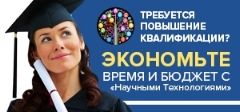Gezha Roman Valeryevich (Teacher, Moscow State Academy of Veterinary Medicine and Biotechnology named after K.I. Skrjabin)
Surkov Aleksandr Mikhailovich (candidate of pedagogical sciences, Associate Professor, Moscow State Academy of Veterinary Medicine and Biotechnology named after K.I. Skrjabin)
Antipov Oleg Vladimirovich (candidate of biological sciences, Associate Professor, Moscow State Academy of Veterinary Medicine and Biotechnology named after K.I. Skrjabin)
| |
Physical education aims to teach students to engage in physical activity and lead a healthy lifestyle throughout their lives. Compulsory school physical education covers all school-age children and promotes physical activity by offering opportunities to use movements, games and sports culture, and at the same time personally develop into a competent, literate and enthusiastic sports person by experiencing movements, games and sports. Thus, the purpose of physical education in general and the content of the physical education lesson in particular entail personal and social significance throughout life.
Physical education teachers strive to develop and maintain students ' enthusiasm for the subject of physical education, as well as physical activity in general, which ideally leads to a state of internal motivation. This is important because studies have shown that physical activity in general and motivation to exercise decrease from childhood to adolescence, especially in adolescence. years. The reasons given are related to puberty or to a change or shift in interests from physical activity during adolescence. Consequently, only 26% of German adolescents follow the World Health Organization's recommendations for 60 minutes of moderate-to-high-intensity daily physical activity. In addition, the World Health Organization has reported an increase in the number of overweight and obese children. Given these facts, the role of physical education in the transmission of knowledge and enthusiasm for an active and healthy lifestyle is becoming more and more important. The sports education model is a widely used approach that aims to provide students with an authentic experience and thereby gain motivation in physical education. By taking on roles in the learning process, students develop personal qualities and internalize the idea of sports.
Physical training should emphasize the various possibilities of physical activity and allow students to experience multi-faceted movements, games, and sports culture to find an individually preferred activity. Students use and perceive the proposals of the movement in different ways. Thus, physical education classes require an adequate design suitable for each student. Therefore, it is very important to study the features of physical education of students in non-physical education universities.
Keywords:physical culture, higher education, student's personality, education, sport.
|
|
| |
|
Read the full article …
|
Citation link:
Gezha R. V., Surkov A. M., Antipov O. V. Features of physical education of students of non-physical education institutions // Современная наука: актуальные проблемы теории и практики. Серия: ГУМАНИТАРНЫЕ НАУКИ. -2021. -№03. -С. 65-70 DOI 10.37882/2223-2982.2021.03.10 |
|
|






